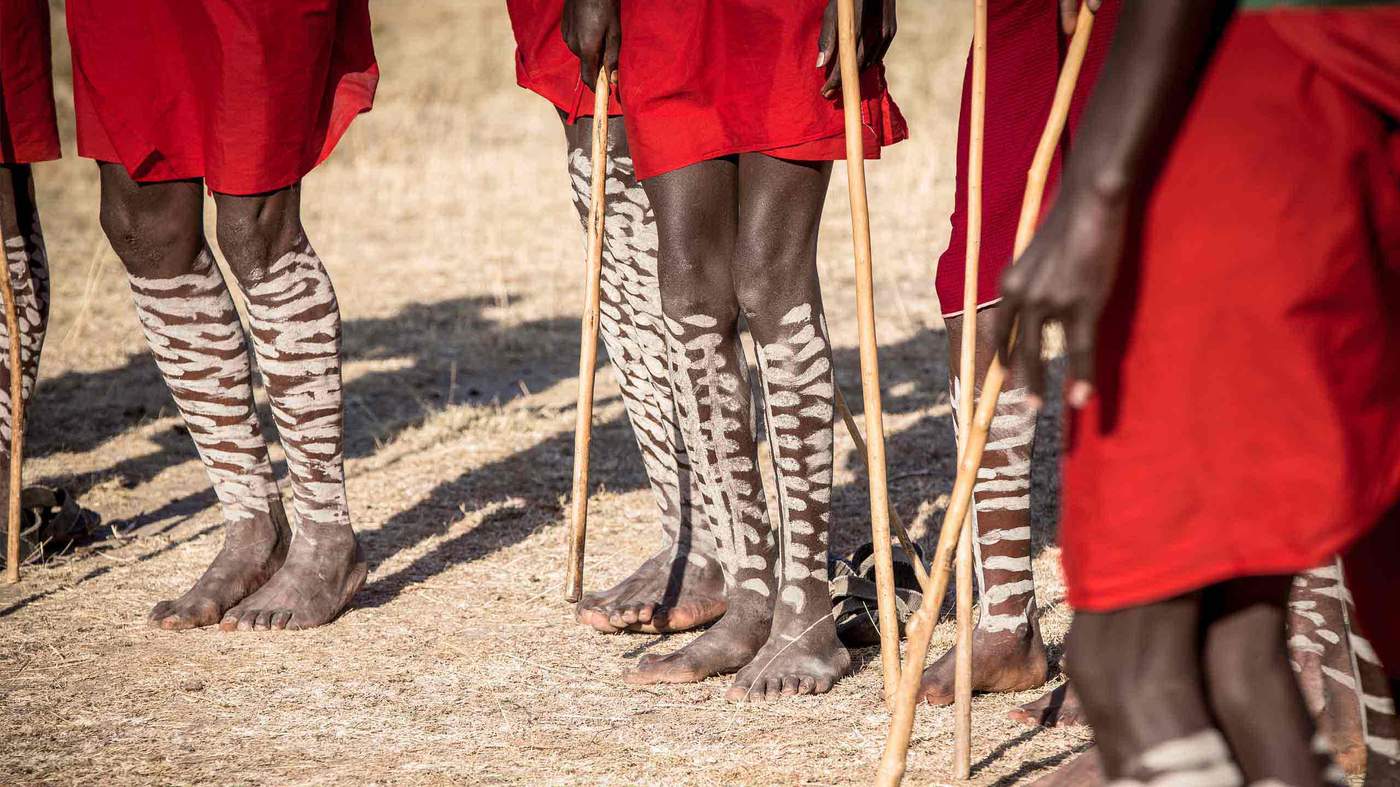'A zebra takes its stripes wherever it goes.'
During the day, Steven can tell the time by how the shade falls across the grass. But when night comes, he’s got another technique.
In the four hours we spend sitting by the campfire in a small village in Loita Hills, southern Kenya, three aeroplanes fly over, tearing through the quiet of the bush and the studded fabric of the Milky Way. They’re headed for Nairobi. Steven reels off the flight schedule: one at 8pm, then another at 10pm, followed by 12am, 3am and 5am – chimes in the turn of an aeronautical clock, a mechanical timepiece of skies. “Lots of tourists in Kenya,” he says thoughtfully. “Lots of tourists.”
Four Maasai warriors sit around the fire, armed with spears to protect us from any lions or hyenas lurking beyond the campsite. As 10pm roars over our heads, Steven adjusts his red shuka and drags his eyes back to Earth. “A visitor is very strange. He doesn’t even know which direction he has come from! Do you know which way is Australia?” I search the sky for the Southern Cross and sheepishly point behind us. Steven grins and guides my arm 100 degrees to the right. “Over there, southwest. That’s where the sun set this evening, remember?”
It’s okay, I tell myself, wallowing in my lack of phone reception and secretly pining for my old friend Google Maps. This guy walked to Tanzania the other week for a wedding.
Of Kenya’s 42 tribes, the Maasai are the most famous. You might have seen pictures of them in National Geographic calendars or coffee table books – tall, dark and crimson-clad, squinting into the sun or leaping high off the ground. While most of Kenya’s ethnic groups have taken up more modern lifestyles and moved towards the cities, the Maasai continue to maintain their traditional way of life – living off their cattle, migrating with the seasons and upholding time-old social structures and customs.
But in the 21st century, things are slowly changing.
The next morning, the young men of the village – Moses included – perform the Adumu or ‘warrior jump’ – a ceremonial coming-of-age dance which shows off their strength and manhood. It’s also a way to get girls: the higher you jump, the more appealing you are to the ladies.
The warriors – clad in blood-red robes and cascades of silver coins –emit a guttural chant as they jump. They invite the men from our group to jump with them, and even a few women, but it’s harder than it looks.

I wonder how much of what we see is on for show for tourists. Practices once reserved for important cultural occasions – drinking beer, making ornate jewelry, doing the warrior jump – now take place every week, at least during the high season. But tourism has also become an extra source of income, a way for communities to buy vegetables, keep their cattle and send their kids to school, maybe even to university. And when you meet people like Steve and David and Moses, who seem genuinely happy to have you there and share their culture, it’s hard not to feel hopeful.
What does a Maasai warrior look like in the 21st century? He’s as loquacious and curious as Steven. He’s got big dreams and his whole life ahead of him, like Moses. Some warriors – Steve’s brother Anthony, for example – use Facebook (he still hasn’t accepted my friend request), while others like David – he shakes his head with a smile – never will.
No community or culture – even one as fiercely resilient as the Maasai – exists in a vacuum. Even in the middle of the African bush, the expanding, modernising world encroaches. People change and they resist change. Shukas, once dyed red with Maasai mint, are now made by machine, but a warrior will still walk for seven days to find a good one in Nairobi. Planes fly overhead, email addresses are exchanged with travellers from faraway lands, and light globes hang forgotten as eyes adjust in the dark.
The writer travelled on Intrepid's 8-day Kenya Wildlife Safari tour, beginning and ending in Nairobi. The tour includes 20 meals, accommodation, lots of activities and wildlife game drives, and the wisdom of an expert East African Leader. For more information, check out Intrepid Travel's small group adventures.









